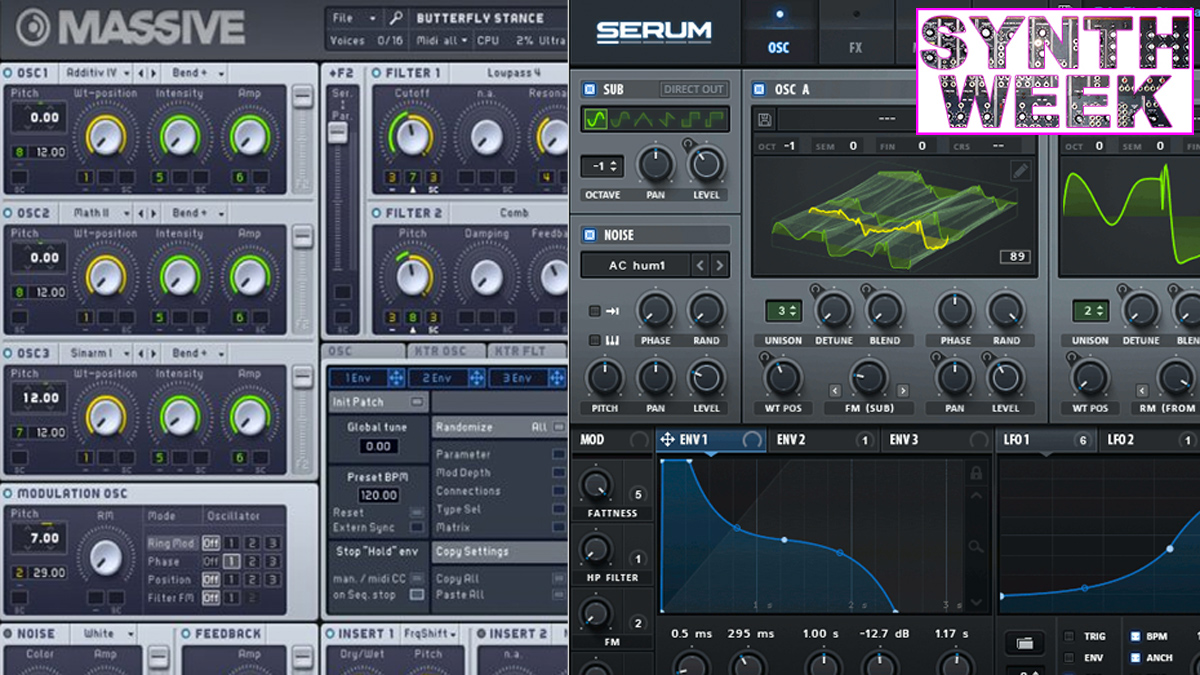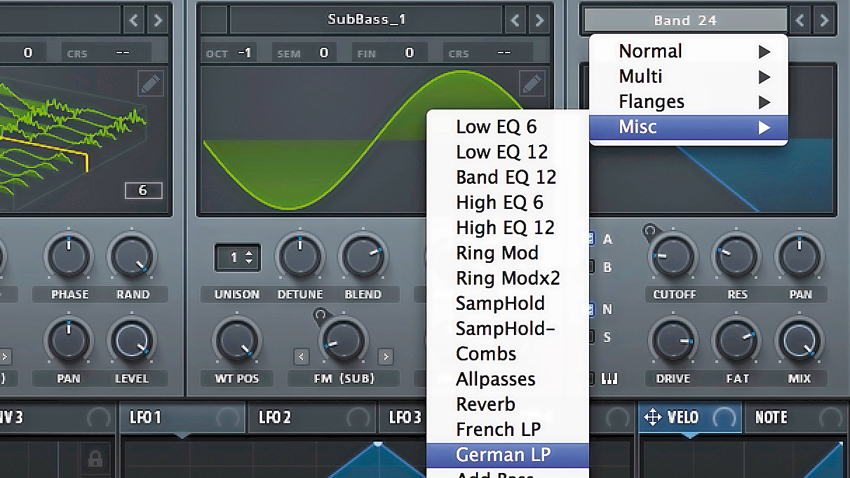9 cutting-edge synth tricks to try
Make better electronic sounds today with these tips and techniques

SYNTH WEEK: While the latest virtual instruments will always push the envelope in terms of new architectures and onboard tools, the general principles of synthesis and sound design remain universal - and when it comes to mastering them, you never really stop learning.
Here, then, are nine tips put together to improve any synthesist's workflow and output.

1. Future filters
Traditional subtractive synthesis is like sculpture: you start with full-frequency oscillator tones, then carve away those frequencies using the filter. For temporal interest, you control the filter’s movement over time via envelopes and LFOs. We’re all familiar with this kind of low-, high- and band-pass filtering, but today’s ultra-modern power synths feature plenty of additional filter types, all suited to cutting-edge sound design. Xfer Serum has a hefty selection of 90 filter types, including a Flanges category – try modulating the cutoff with a tempo-sync’d custom LFO shape, then use the filter’s Mix knob to blend this pseudo-flanging in parallel alongside your main wavetable oscillators.
Another way to take filtering further is by engaging two or more filters at once. NI Massive’s two independent filters can be routed in series or parallel. By routing the oscillators to each filter by differing amounts and mixing the two filter outputs together, an interesting blend of timbres can result.
2. Ride the waves
Many synths let you create your own wavetable oscillators from scratch, but the process can often feel like trial and error. To learn how to do it well, dissect your favourite preset ’tables to get a feel for what separates the wavetable wheat from the chaff.
3. Dial in impressive width
Modern synth patches are wider than ever, designed for stereo systems and headphones. Yet with most club systems still set up in mono, your core synth sounds must have a strong presence down the centre of the mix as well as the sides.
Aside from spreading and panning unison voices, there are plenty of ways to give your synth parts lush stereo content. Simple is often better: pan multiple oscillators out to the sides, or get them swirling around the stereo field by assigning a medium-rate LFO to your oscillators’ pan controls.
Get the MusicRadar Newsletter
Want all the hottest music and gear news, reviews, deals, features and more, direct to your inbox? Sign up here.
4. Don't fear FM
Frequency modulation synthesis has a daunting reputation for complexity. Build your FM knowledge up slowly by designing simple basses and leads, then gradually adding more modulators until you grasp how it works.
5. Don't overlook built-in effects
It’s often the final processing effects that add that stamp of sonic individuality to a synth sound. These can be added via external hardware or plugins, but there are advantages to using your synth’s built-in effects: their settings are packaged within the preset for easy recall; their parameters can generally be swept automatically by the synth’s onboard modulators; and some synths allow you to pipe various elements of the internal signal path into these effects by varying amounts for greater flexibility. For vibey grunt and drive, a synth’s built-in distortion stage is usually a good starting point.
6. Synth to sampler
Samplers are essentially synthesisers, so why not multisample your most complex oscillator creations and carry on the synth design process using your favourite sampler’s sound-mangling features?
7. Make your own performance controls
The mod wheel has long been the go-to controller for adjusting parameters as you perform. Within your synth, assign it as a modulation source to any destination parameter, then spin it as you play to fling that parameter around in real time.
Nowadays, though, it’s all about macro assignments. Macros are blank knobs that can be assigned to any number of parameters across the entire synth, then slaved to your mod wheel or other MIDI controller. Thus, you can generate a whole bunch of separate parameter movements with the twist of just a single knob.
8. Find the time
Designing a complex synth patch during the heat of a track-writing session is the quickest way to kill your compositional creativity. Set aside dedicated patch building sessions to stock up your custom presets folder ready for creative droughts.
9. All the colours of the noise rainbow
White noise is an essential ingredient for adding treble fizz, bite and top-end intensity to any synth patch. Yet the bog-standard white noise oscillator is becoming old hat, as developers are cottoning on to the fact that a synth’s potential for creative sound design can be expanded by including different types of noise.
NI’s Massive houses several sampled noise types, including brighter, thinner variations, and even sampled paper-rustling for sculpting weirder percussion and FX. Xfer Serum has hundreds of sampled noise waveforms in its ‘pseudo-sampler’ noise oscillator - and you can even load external samples in, too.
Synth Week is brought to you in association with Novation. For more tutorials, tips and features, check out the Synth Week hub page.
Future Music is the number one magazine for today's producers. Packed with technique and technology we'll help you make great new music. All-access artist interviews, in-depth gear reviews, essential production tutorials and much more. Every marvellous monthly edition features reliable reviews of the latest and greatest hardware and software technology and techniques, unparalleled advice, in-depth interviews, sensational free samples and so much more to improve the experience and outcome of your music-making.










